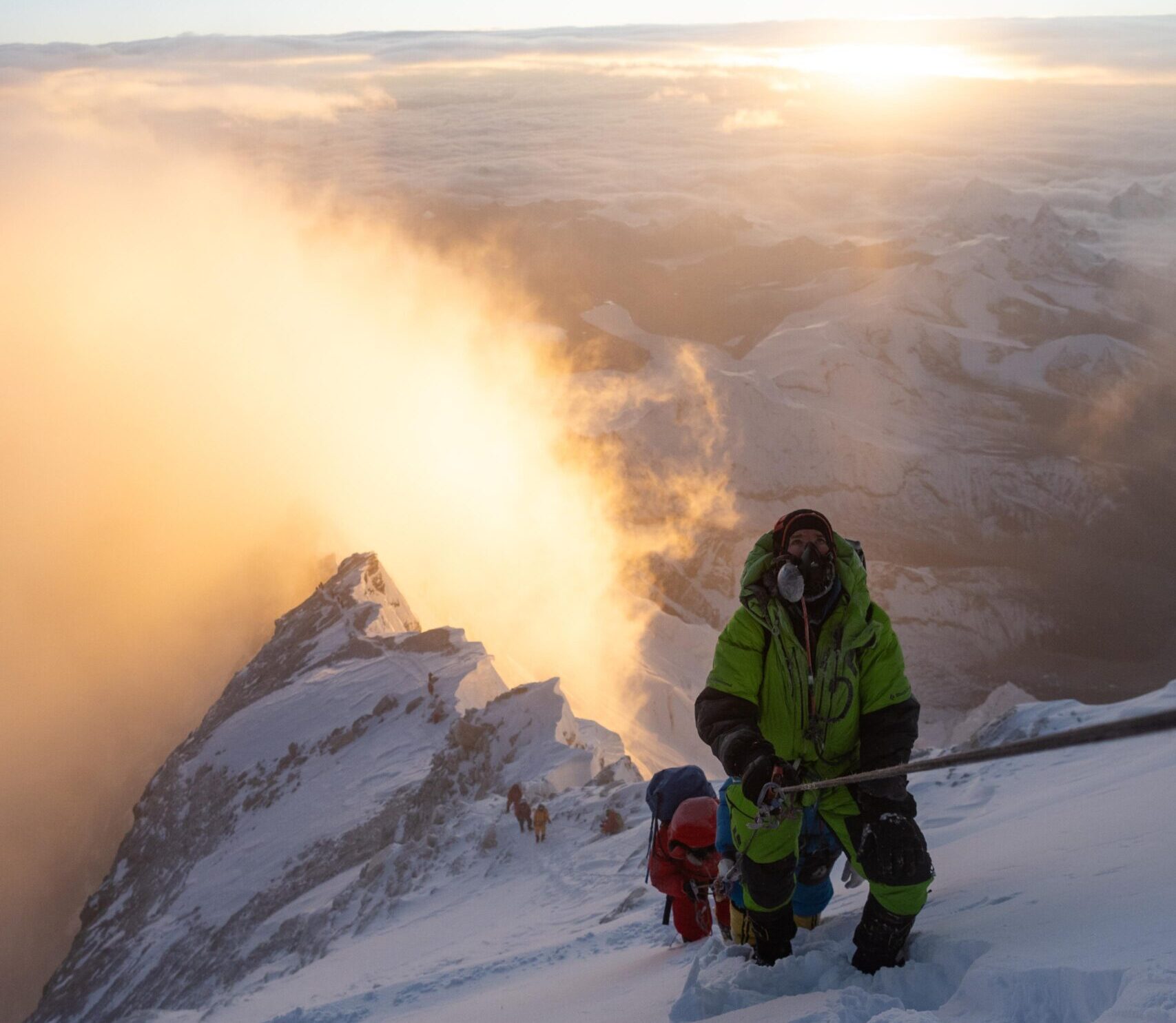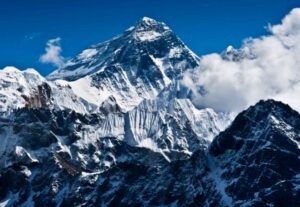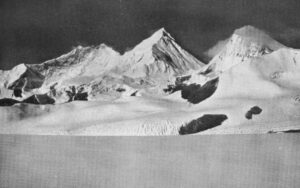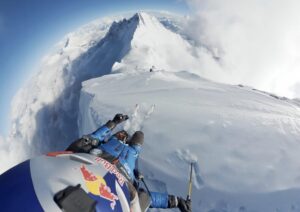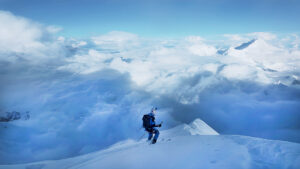Yesterday’s Everest Day celebrations in Kathmandu marked both the 72nd anniversary of the peak’s first ascent and the official closure of the 2025 season.
Overall, the season featured uncertain weather and often jet-stream winds on the upper slopes. Otherwise, everything went largely according to plan at a time when high-altitude climbing is increasingly commercialized and less adventurous.
Goodbye till 2026
The Sagarmatha Pollution Control Committee marked the official closure with a video and words of appreciation for the tireless Icefall Doctors.
So far, no one has announced Everest expeditions for this fall. The mountain is usually harder to climb after the monsoon. This year, it will also be significantly more expensive, as the new permit fees come into effect. Beginning in the fall, the permit for climbing Everest will increase from $11,000 to $15,000 per person. Considering that an Everest expedition costs from about $30,000 to well into six figures, it is unclear whether this permit increase will impact the number of climbers next year.
The Sagarmatha Pollution Control Committee (SPCC) is doing a great job controlling the amount of garbage that climbers leave on the mountain, especially in the upper camps. While there remains a lot of work to do, Everest is getting cleaner.
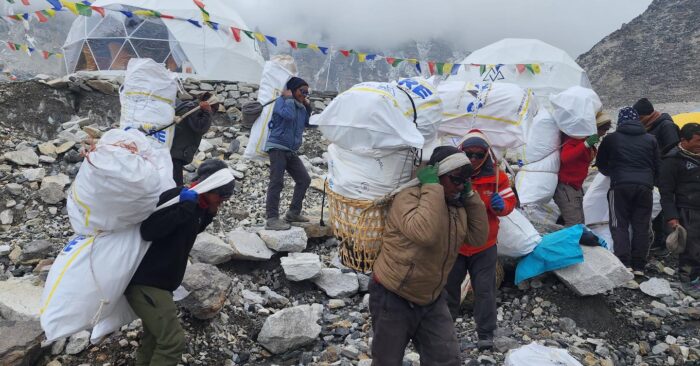
Employees of the Sagarmatha Pollution Control Committee retrieve bags of garbage from Everest Base Camp. Photo: SPCC
Summit figures
While the official number of summits on the South Side is not yet released, Himal Gautam, director at Nepal’s Department of Tourism (DoT), told Everest Chronicle that 694 individuals summited from the Nepali side throughout the season.
“This included 257 foreign climbers, nine Nepali nationals with climbing permits, 421 Sherpas and high-altitude guides, and seven members of the rope-fixing team,” the official said.
Adding up the summits reported on the North Side, where all teams were successful, the final summit tally on the mountain should approach 800.
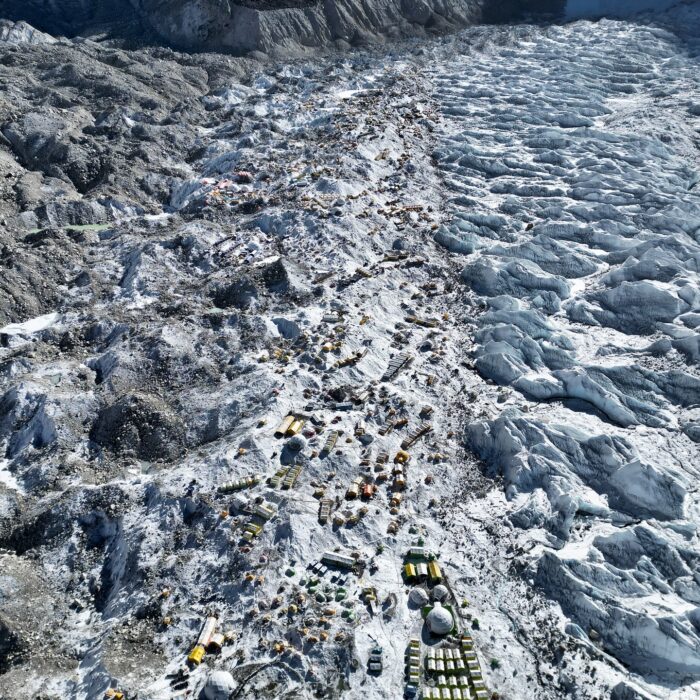
Aerial panorama of Everest Base Camp in 2025. Photo: Furtenbach Adventures
Like every year, the Everest experience has featured long lines at times, especially during the few days of predictably good conditions. Some teams chose to go on windier days or waited until the last minute when most groups had left. The biggest crowds at the summit occurred on May 18. The best summit day was May 27, with mild temperatures, no wind, and nearly no one else around.
Increasing temperatures made the route through the Khumbu Icefall more dangerous. Teams were advised to attempt the summit or at least be above Camp 2 by May 25.
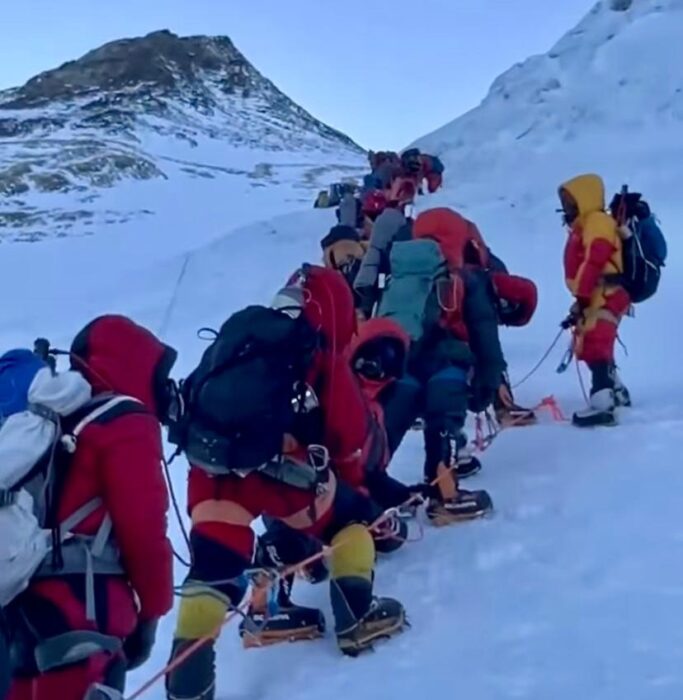
Crowds above Camp 4. Photo: Gyalzen Sherpa
According to the Nepal Department of Tourism, 468 permits were granted to climbers from 57 countries. A similar number of climbing Sherpas assisted them.
Tranquil North Side
On the North Side, all the international groups succeeded after a Chinese team fixed the ropes to the summit. Each group followed its own pace, and the summits were distributed over several days, with no crowds to report.
Alpenglow was the last to summit, and its 11 foreign climbers and 11 Sherpas made the top on May 27, the best day on both sides of the mountain. They had Everest to themselves.
“There was not a breath of wind, and [it was] shockingly warm,” leader Adrian Ballinger told ExplorersWeb. “This was my 10th summit, and I had the fun opportunity to climb from Advanced Base Camp to Camp 2 on day 1, and Camp 2 to the summit on day 2, skipping Camps 1 and 3,” he said while on the road back to Lhasa today.
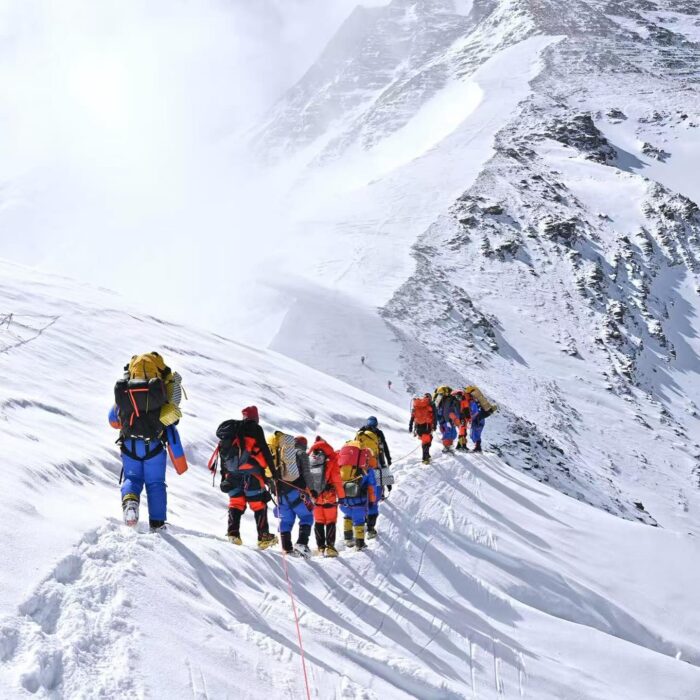
Climbers at the North Col, Everest North Side. Photo: Imagine Nepal
Casualties
Three people died on the mountain above Base Camp, and none of these deaths occurred because of climbing accidents or avalanches. Pen Chhiri Sherpa of Nepal died of a cardiac arrest at Camp 1. Subrata Gosh of India fell sick and passed shortly after starting his descent, and Philipp Santiago of the Philippines died at Camp 4 before heading up to the summit. Two other climbers died while attempting Lhotse.
We know of no deaths on the North Side.
While still tragic, this number is low compared to previous years. Superior training, better equipment, endless supplies of oxygen, increased support staff, more skilled guides, and better weather forecasting have made the mountain safer than ever. However, risks remain high, both due to external hazards and the climbers’ own limitations.
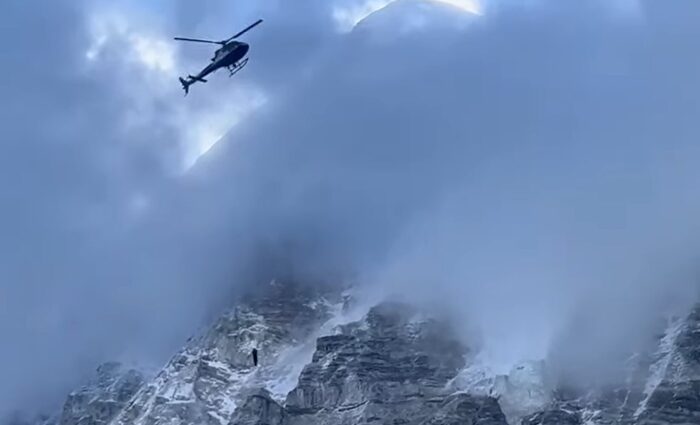
A rescue helicopter with a climber at the end of a long line approaches Everest Base Camp. Frame of a video by Everest ER Base Camp Clinic
There was reportedly a significant number of aerial rescues, although agencies, rescuers, and authorities tend to keep exact numbers quiet. This omerta is too bad, because statistics on the reasons for and circumstances of rescues would help prevent such problems in the future.
Local records
In addition to a few age records, guides working on the mountain over the years reached an impressive number of Everest summits. Kami Rita Sherpa, still going strong at 55, did his 31st and Kenton Cool, 51, of the UK stood on top for the 19th time.
Some Sherpas summited several times in the same season. Tashi Gyalzen Sherpa did so four times, first as a rope fixer and then three other times with clients.
Fast expeditions were likely the story of the 2025 season. The so-called Xenon climbers team, outfitted by Lukas Furtenbach, endured early criticism for their intention to use one more artificial aid to get up poor old Mount Everest. Yet all four (who used live trackers) summited on May 21, five days after leaving London, and made it home in less than a week, as planned. Besides the Xenon therapy, the team underwent intensive hypoxic training at home, flew to Nepal when the weather and the route were ready for a single summit push, and were medically monitored during the ascent and descent.
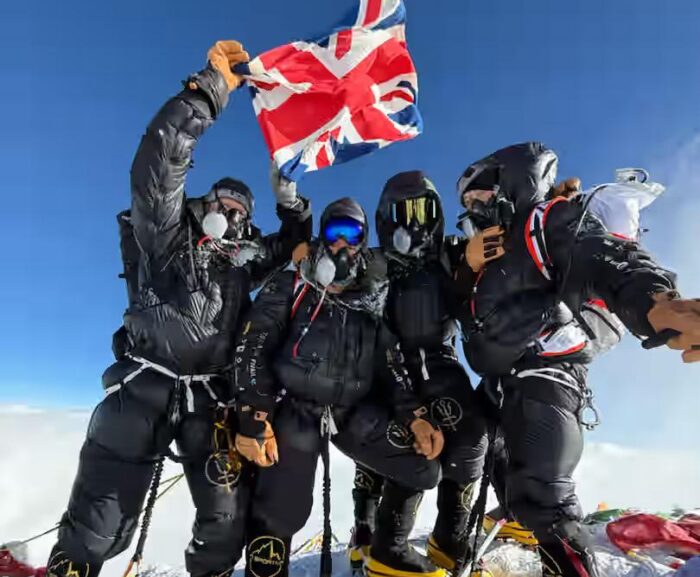
The Furtenbach Adventures team on the summit. Photo: Sandro Gromen-Hayes
Andrew Ushakov, a client with Elite Exped, reportedly completed his climb from NYC to the summit in four days, using supplementary oxygen from Base Camp and two Sherpa teams to support him, but without Xenon or dexamethasone. We are currently checking the facts of that climb.
No-O2
Anja Blacha of Germany summited Everest without bottled oxygen or personal Sherpa support. This was just the second no-O2 ascent this season, and her 12th 8,000’er without supplementary oxygen. She is the 15th female to summit Everest in this style. Blacha had also climbed Annapurna and Dhaulagiri this season. Local outfitters only reported her Everest climb after she had finished it.
In addition to Blacha, the only other successful ascent without bottled oxygen on Everest this season (that we know of) was Patricio Arevalo of Ecuador. Other climbers tried but eventually turned to oxygen or retreated. Among the latter was Marcelo Segovia, also from Ecuador, who had to turn around after spending two hard, oxygen-deprived nights at Camp 4 due to high winds.
Norway’s Kristin Harila posted last week on Instagram that she had attempted to climb Everest without oxygen but didn’t reach the summit.
Secrecy
Keeping climbing projects quiet and then sharing the news only when finished (and often, only if the result is positive) is a growing trend. Still, whether it’s a record quest or a no-O2 attempt, providing sufficient details either before, during, or after is still necessary to avoid raising doubts. Unfortunately, false claims have occurred throughout Everest’s climbing history, so clarity and transparency remain vital.
Live tracking, in particular, adds credibility and also inspires audiences to follow an expedition.
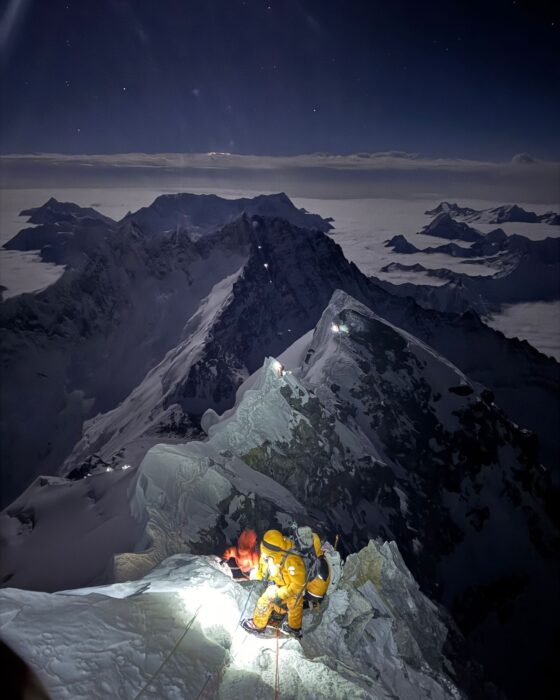
Climbers head toward the summit of Everest near dawn. Photo: Furtenbach Adventures
The runners
This year, with no alpine feats attempted on Everest, attention turned mainly to alternative challenges, most of them based on speed.
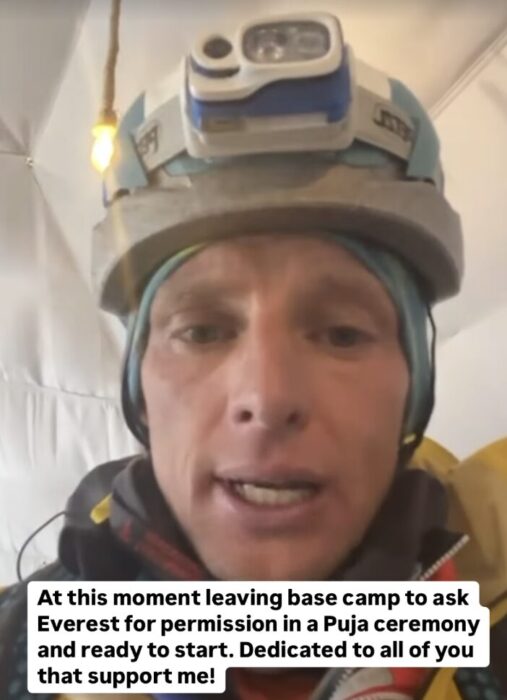
Egloff’s farewell before departure. Photo: Instagram
Professional trail runners Tyler Andrews of the U.S. and Karl Egloff of Ecuador each tried to achieve a Fastest Known Time on Everest. Bad conditions thwarted both athletes. Egloff tried on May 23, and Andrews tried three times unsuccessfully.
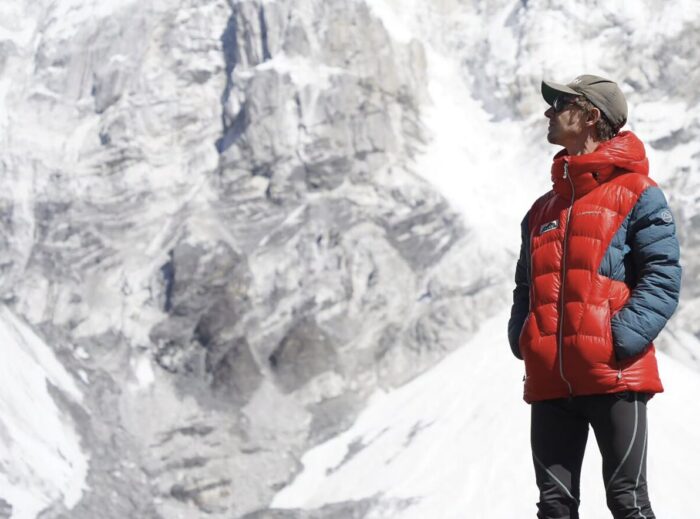
Tyler Andrews at Everest Base Camp some days ago. Photo: Instagram
On his latest attempt, Tyler Andrews reached 8,300m before retreating. He is still recovering from the effort.
“I have never been that exhausted in my life,” he told Explorersweb today. We will post further details on his climb soon.
The wingsuit flight attempt
Tim Howell of the UK attempted the highest-ever wingsuit exit, from 8,300m on the Lhotse ridge and down the sheer South Face of Lhotse toward Chukhung village. The May 21 attempt failed because of relentless winds on the ridge, but it involved some epic moments and a truly alpine approach.
Guides Jon Gupta and Tom Seccombe fixed an alternative route to the chosen point and then waited for the right conditions. Hoping for the wind to abate in the afternoon of May 21, the team left their high camp at 7,700m in the early hours and went to the end of the fixed ropes. Gupta and Seccombe then fixed the last three pitches to the exit point by crossing to the South Face of Lhotse and reaching the top of a pillar at 8,300m.
Tim Howell, cameramen Brodie Hood and Jake Holland, and four Sherpa climbers, waited patiently at a ledge some 50m below. Unfortunately, the clouds never parted, and the team eventually retreated.
